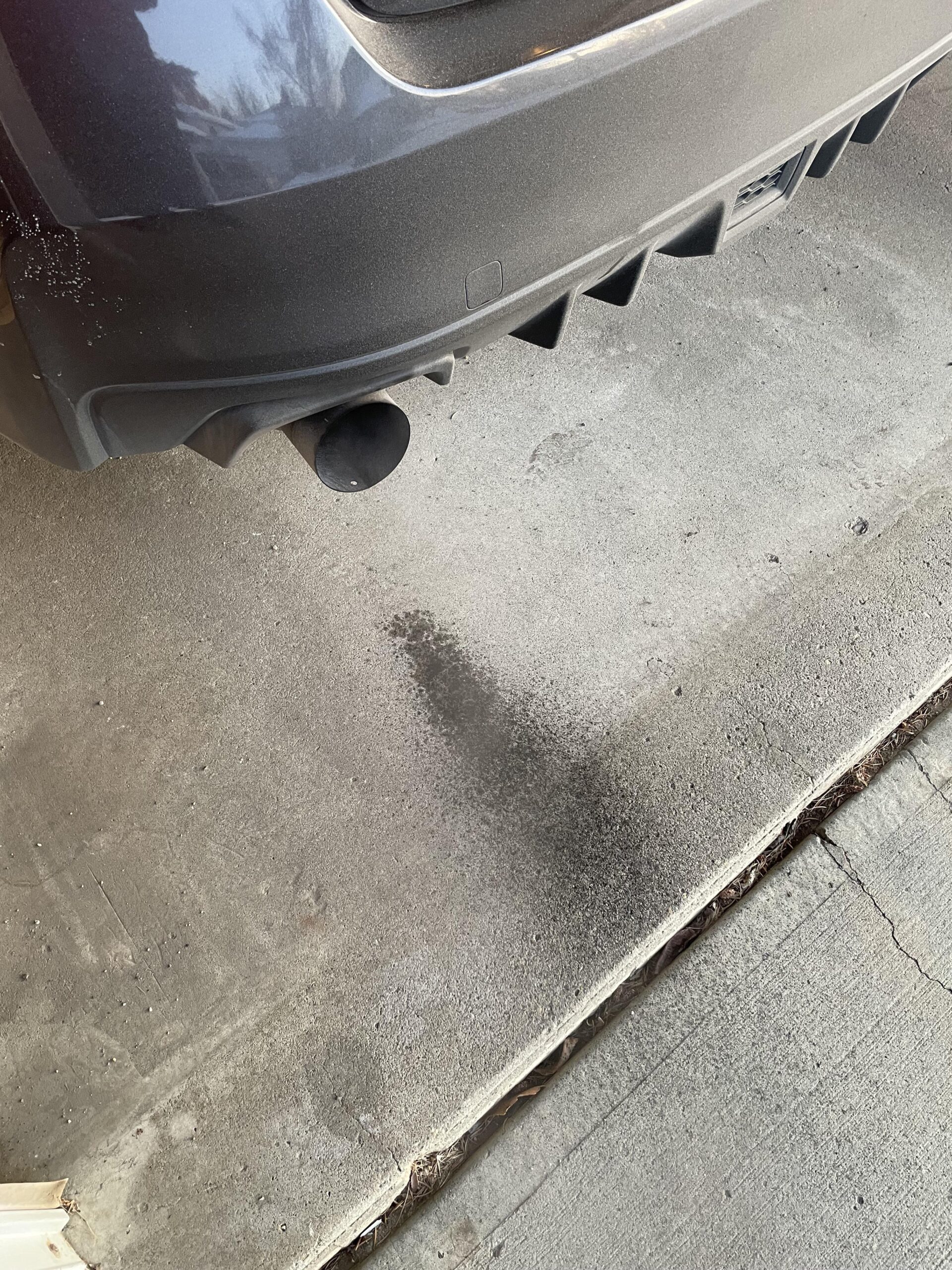Black soot on the ground from exhaust can be a troubling sight. It can signal underlying issues with your vehicle.
Many drivers notice black soot and wonder about its cause. This residue can appear on the ground where cars are parked. It can be a sign of incomplete combustion or other mechanical problems. Understanding the cause is important for both vehicle health and environmental reasons.
In this blog, we will explore the main reasons for black soot from exhaust. We will also discuss the potential impacts and solutions. This knowledge can help you maintain your vehicle better and avoid bigger problems in the future. Let’s dive in and learn more about this common issue.
Introduction To Black Soot
Black soot is a dark, powdery substance. It comes from vehicle exhaust. It can be harmful. It often sticks to surfaces like the ground.
Engines burn fuel. This process creates black soot. The soot exits through the exhaust pipe. It then settles on the ground. Poor engine maintenance can increase soot. Bad fuel quality can also be a cause.
Common Causes Of Black Soot
Incomplete combustion means fuel does not burn properly. This can cause black soot. Engines need the right mix of air and fuel. Too much fuel or too little air leads to incomplete combustion. This creates black soot.
Low-quality fuel can cause black soot. Some fuels have more impurities. These impurities do not burn well. This leaves behind black soot. Always use good quality fuel for your engine.
Engine-related Issues
Faulty fuel injectors can cause black soot. They might not spray fuel correctly. This leads to poor combustion. Unburned fuel turns into soot. The soot then exits through the exhaust. Regular checks of injectors help avoid this issue.
Worn-out piston rings allow oil to enter the combustion chamber. This oil burns with the fuel. Burned oil turns into black soot. The soot can then be seen on the ground. Replacing piston rings can fix this problem.
Exhaust System Problems
A clogged catalytic converter can cause black soot. This happens because it cannot filter exhaust gases well. As a result, soot builds up in the exhaust. It is important to check the catalytic converter. Cleaning or replacing it might solve the problem.
A damaged muffler can also lead to black soot. Holes or cracks in the muffler allow unfiltered gases to escape. This results in soot on the ground. Inspecting the muffler for damage is necessary. Fixing or replacing the muffler can help reduce the soot.
Environmental Factors
Cold weather can impact exhaust systems. The cold air makes exhaust gases cool quickly. This leads to soot forming. Soot can then fall to the ground. Short trips in cold weather make this worse. Engines do not heat up fully. This leads to more soot.
High altitudes have thin air. Engines need more oxygen. Thin air makes engines work harder. This can lead to more soot. Less oxygen means fuel does not burn completely. Incomplete burning leaves soot. So, high places see more soot on the ground.

Credit: www.reddit.com
Preventive Maintenance Tips
Regular engine check-ups help reduce black soot from exhaust. They ensure your engine works well. A clean engine burns fuel better. It leads to less soot. Visit a mechanic often. They can spot problems early. Fixing small issues prevents bigger ones. Clean parts work better. Dirty parts cause more soot. Keep your engine clean.
Use quality fuel to reduce black soot. Cheap fuel can cause more soot. Quality fuel burns cleaner. It helps engines run smoothly. Less soot means cleaner air. Fill up at trusted stations. They offer good fuel. Check your fuel filter. Replace it if dirty. Clean fuel helps your car.
Immediate Solutions
Cleaning the exhaust system can help remove black soot. Use a cloth to wipe the outside of the exhaust pipe. A wire brush helps clean the inside. Make sure to wear gloves. Gloves protect your hands from dirt. Use a cleaner spray to dissolve soot. Spray it inside the exhaust pipe. Wait a few minutes. Then, scrub again with the wire brush. This can help reduce soot on the ground.
Sometimes, parts in the exhaust system are faulty. These parts can cause soot. Replacing these parts can help. Check the oxygen sensor. A faulty sensor can cause soot. Replace it if needed. Check the catalytic converter. If it is bad, replace it too. Look at the fuel injectors. They might be faulty. Replacing them can help. Replacing faulty parts can reduce soot.
Long-term Strategies
Upgrading your vehicle’s components can reduce black soot. Consider installing a high-quality air filter. This helps the engine breathe better. A well-maintained fuel injection system ensures efficient fuel use. Upgrading to a modern exhaust system also helps. It reduces harmful emissions. These changes can make a big difference.
Eco-friendly practices help reduce black soot. Use cleaner fuels like biodiesel. Regular vehicle maintenance is essential. Check and change your oil often. Drive at steady speeds. Avoid sudden stops. This reduces soot production. Park in shaded areas. This keeps your engine cool. Simple changes, big impact.

Credit: www.reddit.com
Frequently Asked Questions
Why Is There Black Soot Coming From My Exhaust?
Black soot from your exhaust indicates incomplete combustion. Common causes include a clogged air filter, dirty fuel injectors, or engine problems. Regular maintenance can prevent this.
What Does Black Soot On Exhaust Tip Mean?
Black soot on an exhaust tip often indicates incomplete combustion. It can suggest an issue with the air-fuel mixture, a clogged air filter, or a malfunctioning fuel injector. Regular maintenance can help prevent this problem.
Can A Bad Catalytic Converter Cause Black Soot On The Exhaust?
Yes, a bad catalytic converter can cause black soot on the exhaust. It indicates incomplete combustion and poor emissions control.
How To Clean Black Soot From Exhaust?
Clean black soot from exhaust by using a degreaser and a brush. Rinse thoroughly with water. Dry with a clean cloth. Repeat if needed.
Conclusion
Black soot from exhaust is a common issue. It can harm the environment and health. Regular vehicle maintenance helps reduce soot. Clean exhaust systems improve air quality. Pay attention to your car’s performance. Swift action ensures a cleaner ride. You now know the basics of black soot.
Take steps to minimize its impact. Drive responsibly for a healthier planet.

